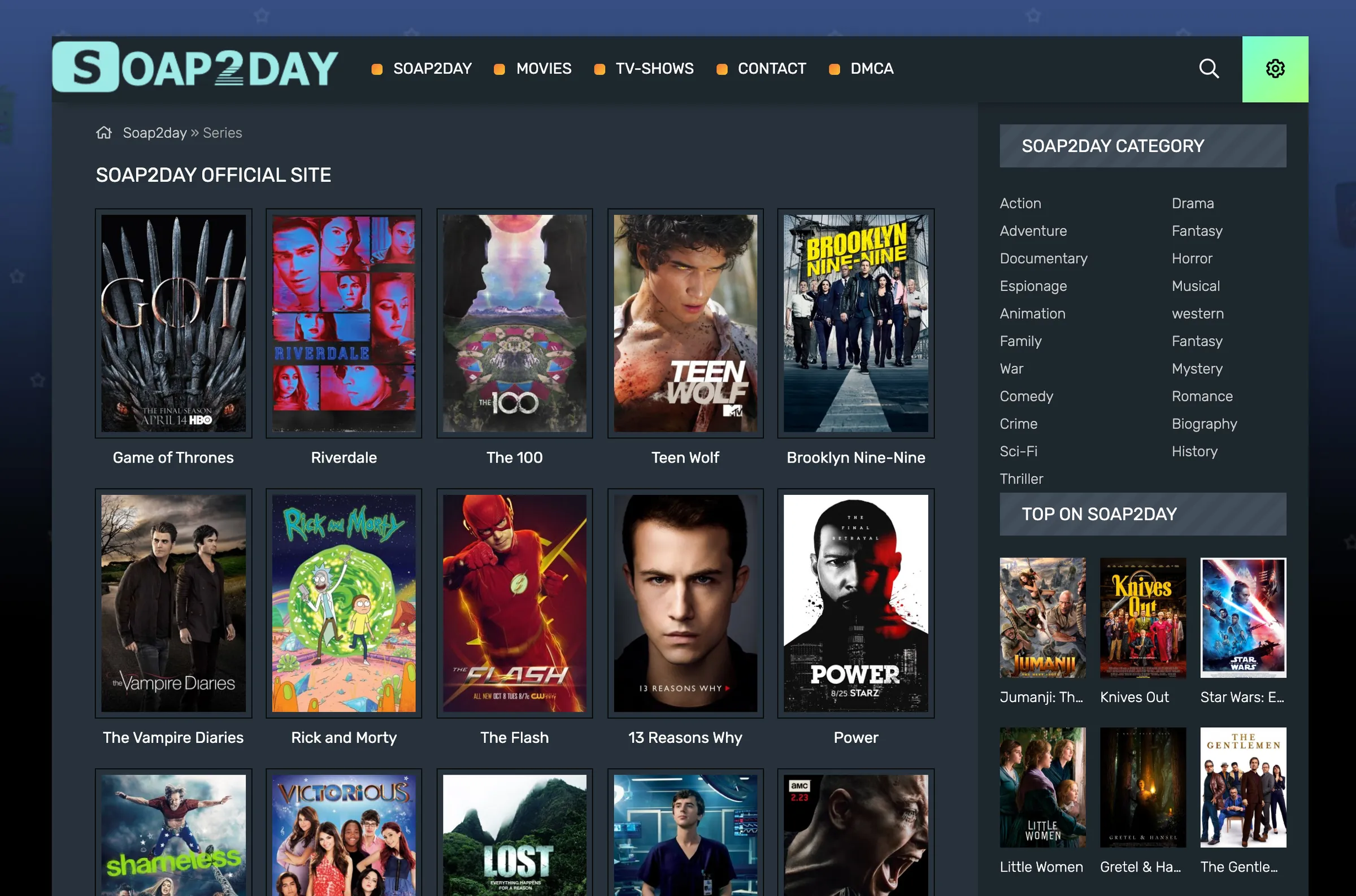Soap2Day has become a popular platform for streaming movies and TV shows online. However, as with any online service, it comes with its share of controversy, questions, and concerns. This article will explore what Soap-2Day is, how it works, its legal implications, and answer frequently asked questions to help you navigate this streaming option.
What is Soap2Day?
Soap-2Day is a free streaming website that allows users to watch movies and TV shows without requiring a subscription. Launched in 2018, it quickly gained traction among viewers seeking an alternative to paid streaming services like Netflix, Hulu, and Amazon Prime. The site boasts a vast library of content, ranging from classic films to the latest blockbusters, making it an attractive option for many.

How Does Soap2Day Work?
Soap-2Day aggregates links from various sources on the internet, enabling users to stream content directly through their web browser. Here’s a simplified breakdown of how it works:
- Content Aggregation: Soap-2Day compiles links from multiple video hosting platforms and uploads. It does not host any content directly but provides a user-friendly interface to access these links.
- User Interface: The website has a simple layout, allowing users to search for movies or shows by genre, release date, or popularity.
- Streaming: When a user selects a title, they are redirected to a page where streaming options are listed. Users can click on any link to start watching the content.
Is Soap2Day Legal?
The legality of Soap-2Day is a contentious topic. Here are some important points to consider:
- Copyright Issues: The majority of the content available on Soap-2Day is copyrighted. Streaming or downloading copyrighted material without permission is illegal in many countries.
- Lack of Licensing: Soap-2Day does not have the necessary licenses to distribute the content it offers, which raises legal concerns.
- Region-Specific Laws: The legal implications of using Soap-2Day can vary depending on your location. Some countries have strict laws against piracy, while others may have more lenient regulations.
Risks of Using Soap2Day
While the allure of free streaming is enticing, there are several risks associated with using Soap-2Day:
- Malware and Viruses: Free streaming sites often carry a higher risk of malware. Clicking on ads or streaming links can potentially lead to malicious downloads.
- Legal Consequences: Users may face fines or other legal repercussions if caught accessing pirated content.
- Data Privacy: Free services may track user data, putting personal information at risk. Using a VPN can mitigate this risk.
- Poor Streaming Quality: The quality of streams on Soap-2Day can vary greatly, with some links leading to low-quality or even broken streams.
FAQs About Soap2Day
1. Is Soap2Day safe to use?
Answer: While many users report successful streaming experiences, Soap-2Day is not entirely safe. There are risks of encountering malware and legal issues. It’s advisable to use a reliable antivirus program and consider a VPN for added privacy.
2. Do I need to create an account to use Soap2Day?
Answer: No, Soap-2Day does not require users to create an account. You can access and stream content without signing up.
3. Can I download movies from Soap2Day?
Answer: Soap-2Day is primarily a streaming site, and it does not officially support downloads. However, some users may use third-party tools to download content, which can be illegal and risky.
4. Why does Soap2Day have so many ads?
Answer: Free streaming services like Soap2Day rely on advertisements for revenue. The site features numerous ads, which can sometimes lead to annoying pop-ups or redirects.
5. What should I do if I encounter a broken link?
Answer: If you find a broken link, you can try refreshing the page or selecting a different streaming option for the same title. Soap2Day aggregates links from various sources, so alternative links may be available.
6. Can I watch Soap2Day on my mobile device?
Answer: Yes, Soap2Day is accessible through mobile browsers. There is no official app, but the website is optimized for mobile use.
7. Is Soap2Day legal in my country?
Answer: The legality of Soap2Day varies by region. It is advisable to consult your local laws regarding copyright and streaming to determine if using the site is legal in your country.
8. What are the alternatives to Soap2Day?
Answer: Several legal alternatives to Soap2Day include Netflix, Hulu, Amazon Prime Video, and Disney+. These services offer extensive libraries of content, often with higher quality and better security.
9. How can I protect my data while using Soap2Day?
Answer: To protect your data, consider using a Virtual Private Network (VPN), which can mask your IP address and encrypt your online activity. Additionally, keep your antivirus software updated to guard against malware.
10. What should I do if I get a virus from Soap2Day?
Answer: If you suspect that you’ve contracted a virus from using Soap2Day, disconnect from the internet and run a full antivirus scan on your device. Follow the antivirus software instructions to remove any detected threats.
Conclusion
Soap2Day presents an appealing option for those looking to access a wide range of movies and TV shows for free. However, users must weigh the risks against the benefits. The potential for legal issues, exposure to malware, and the ethical implications of using such a service cannot be overlooked.
For those who prioritize content quality and security, subscribing to legitimate streaming services is the safer and more reliable choice. As the digital landscape evolves, it is crucial to stay informed about the implications of our online activities and make choices that align with our values and legal standards.
